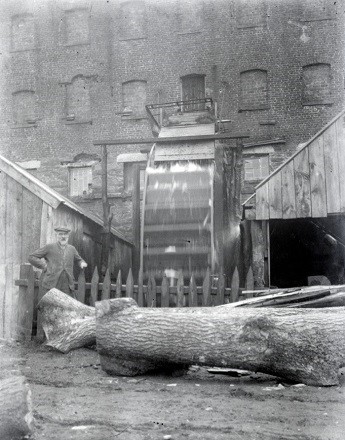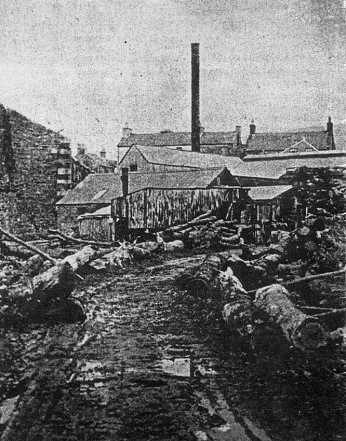
The best history of the Birtwhistle Mills that we are aware of is contained in an A5-sized booklet that was written by Charlie Girdwood for Dumfries and Galloway Regional Council in 1992, soon after the Mill on the Fleet was opened in 1991.
This booklet is now out of print and we hope that we are not infringing copyright by including a copy here as a pdf file.

|

The above sketch has appeared in various articles and has also been the subject of a postcard.
It shows a 3-storey mill in the foreground (this is now "The Mill on the Fleet") and a 4-storey building further back. In other documents there are reports that a brick wall surrounded much if not all of the mill complex area, The drawing shows 4 sections which are probably brick walls between the front of the lower wheel and the brewery building.
Also note that there are 2 windows less on the lower floor of the 3-storey building. This would have been where wheels and pulley systems would have been located inside the mill - these being powered by the lower water wheel.
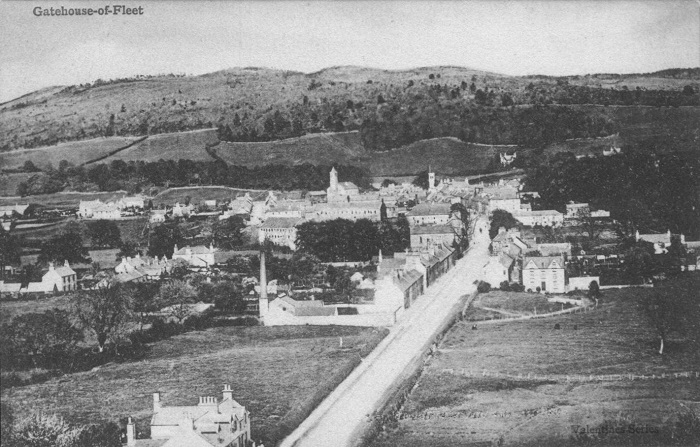
This picture comes from a postcard which must have been taken before the 1919 fire which destroyed the taller mill as both main mill buildings appear to be intact.
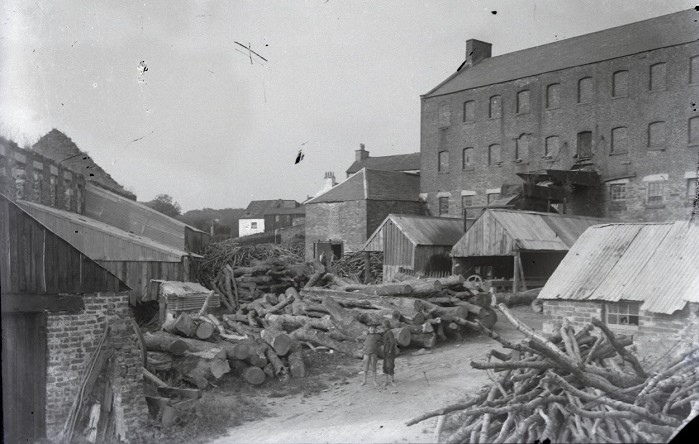 This photo was taken by William McMurray before 1919. Note that all the windows in the "back mill" are "bricked up". There is also no roof on the lower mill (now The Mill on the Fleet). Maybe the tall chimney in the above photo is behind the chimney of the tall mill - photos below show the chimney still there after the tall mill had been reduced to a single storey..
This photo was taken by William McMurray before 1919. Note that all the windows in the "back mill" are "bricked up". There is also no roof on the lower mill (now The Mill on the Fleet). Maybe the tall chimney in the above photo is behind the chimney of the tall mill - photos below show the chimney still there after the tall mill had been reduced to a single storey..
%20-%20Bobbin%20Mill.jpg) This was a drawing for one of Mrs Murray Usher's Christmas Cards, obviously taken from William McMurray's photo above.
This was a drawing for one of Mrs Murray Usher's Christmas Cards, obviously taken from William McMurray's photo above.
|
|
|
|
|
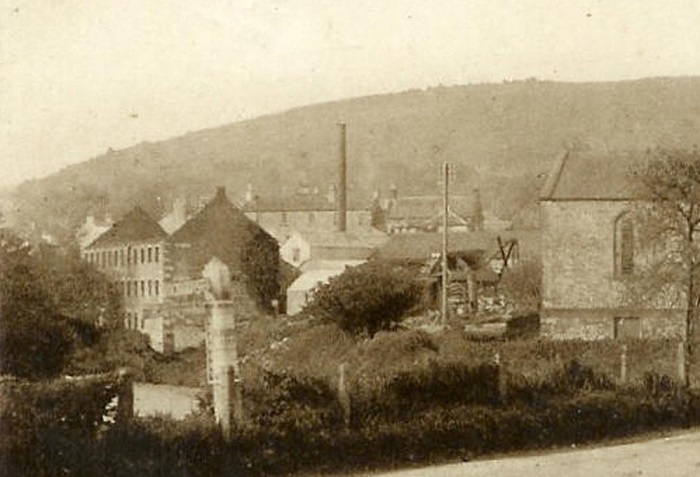
This is close-up taken from an excellent postcard where the subject was photographed from the road bridge over the Fleet.
This shows the tall chimney, a roof on the back mill and the front mill is roofless.
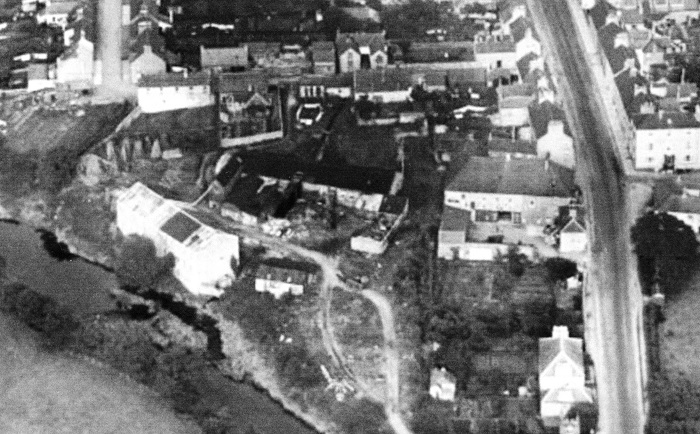 This is a close-up of the Birtwhistle Mills area which is taken from an aerial photograph that would have been taken about the 1920s. It clearly shows the reduced height of the rear mill and our initial thoughts were that the interior of this mill was blackened (presumably as a result of the major fire which took place in 1919). We now think that the photograph shows the roofs of a number of the mill buildings as being very dark in colour, so by this time the rear mill had been re-roofed at single-storey level.
This is a close-up of the Birtwhistle Mills area which is taken from an aerial photograph that would have been taken about the 1920s. It clearly shows the reduced height of the rear mill and our initial thoughts were that the interior of this mill was blackened (presumably as a result of the major fire which took place in 1919). We now think that the photograph shows the roofs of a number of the mill buildings as being very dark in colour, so by this time the rear mill had been re-roofed at single-storey level.
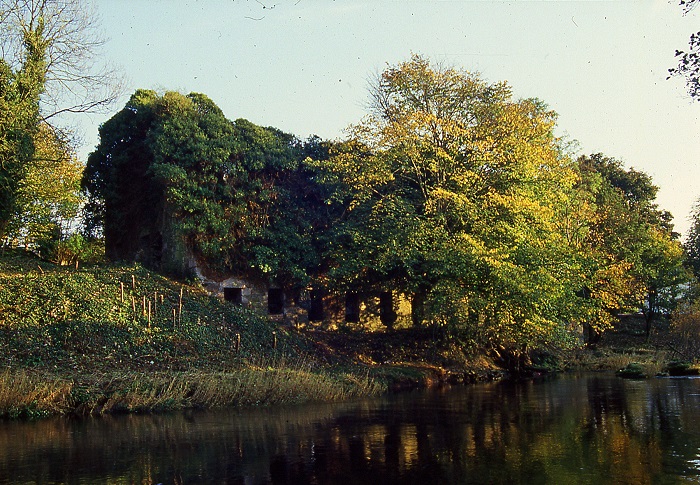
Although some trees have been cut down, this shows how overgrown the lower mill was before it became The Mill on the Fleet.
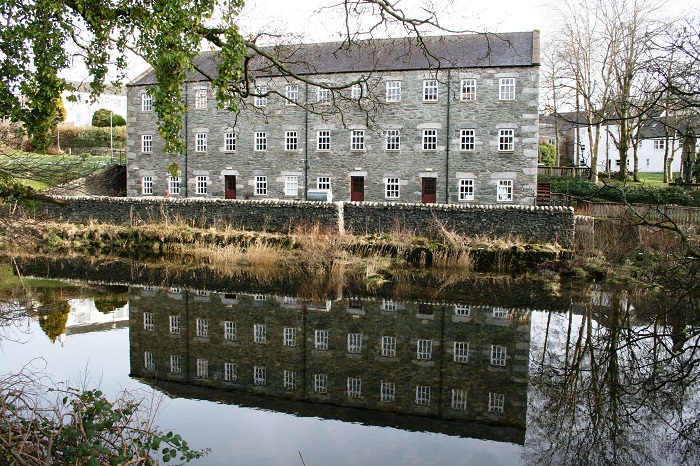 A modern photo of the restored Mill on the Fleet (2015), now a visitor centre.
A modern photo of the restored Mill on the Fleet (2015), now a visitor centre.
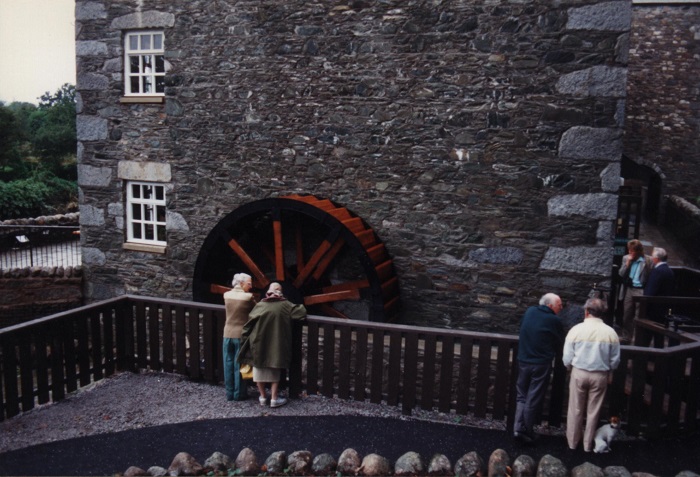
Opening of The Mill on the Fleet in 1991 - showing lower undershot wheel
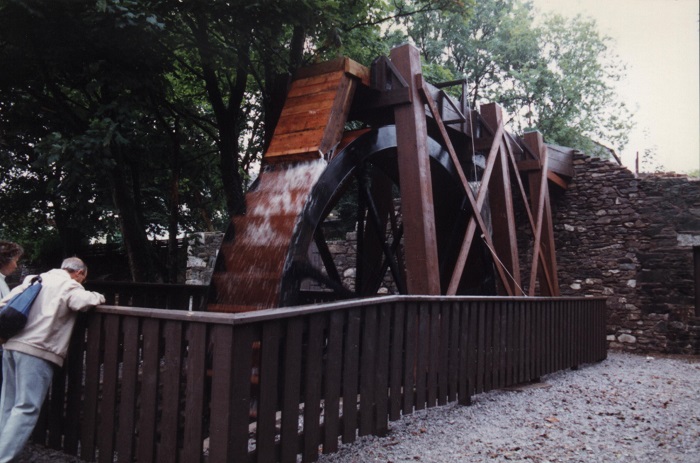
Opening of The Mill on The Fleet in 1991 - showing the upper overshot wheel
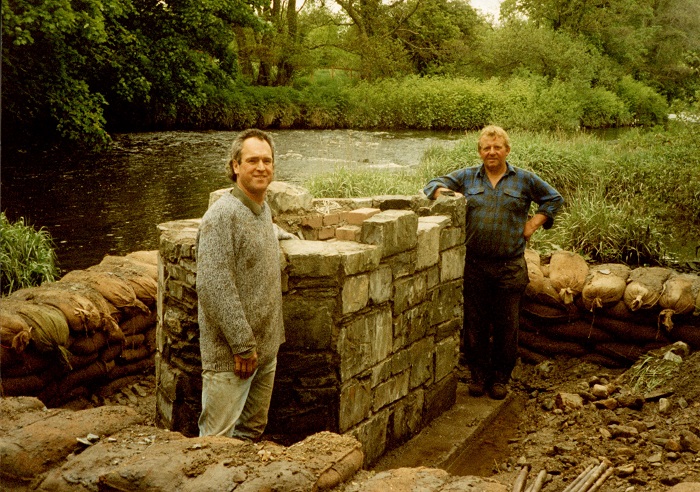
John McCormick and Jack Pickthall made the piers for the Bi-Centenary Bridge (June 1995)
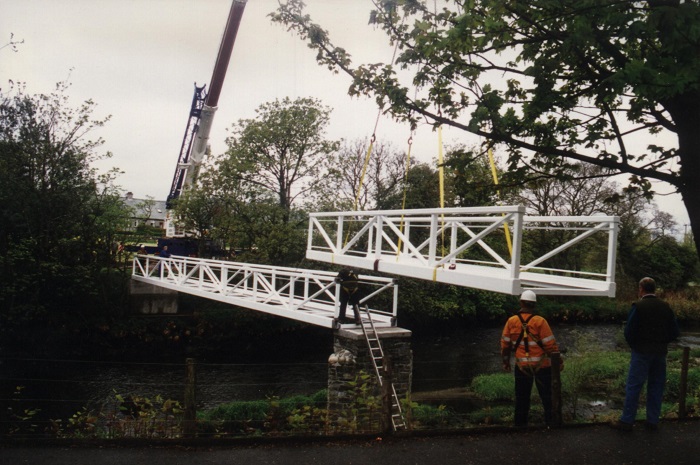
Installation of the Bi-Centenary Bridge in 1995
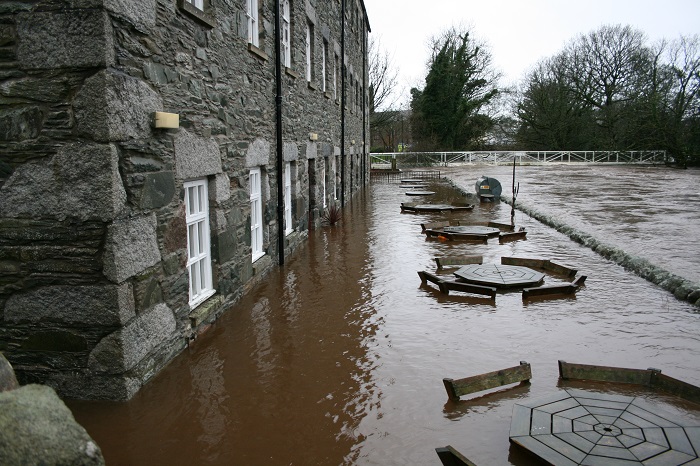
Mill floods 30th December 2015 - The Mill IN The Fleet
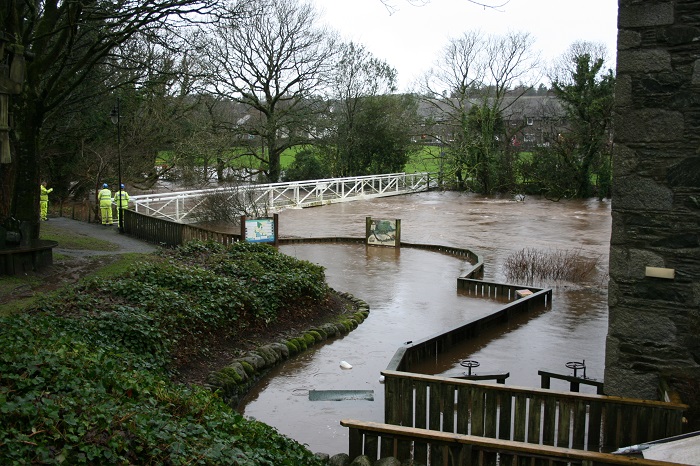
Mill floods 30th December 2015 - The Bi-Centenary Bridge is closed for safety reasons.
